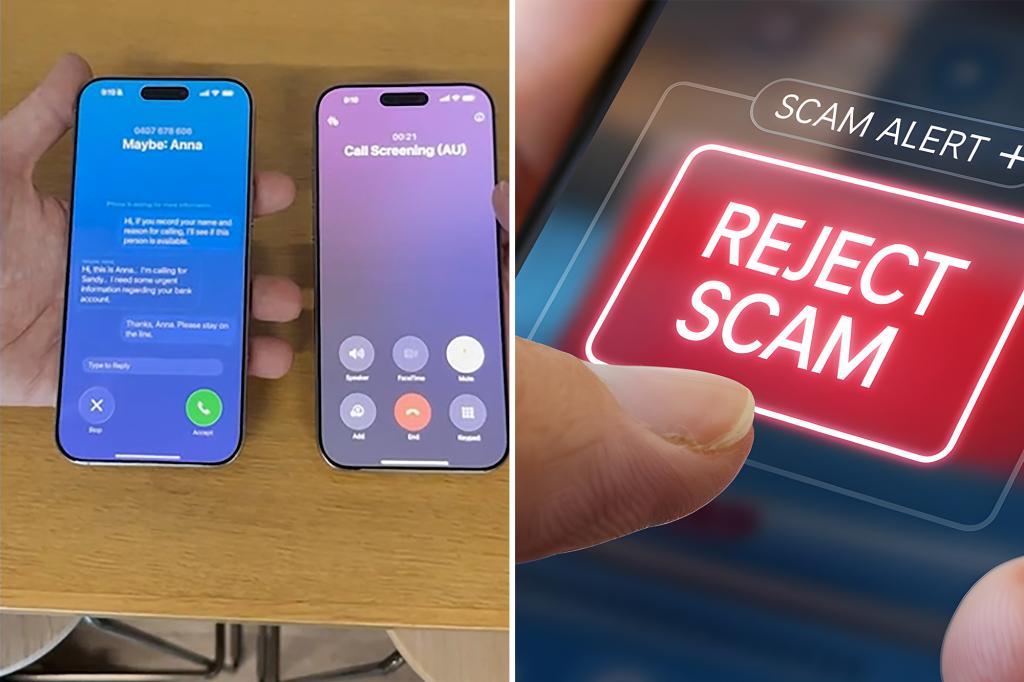Enhancing Your Digital Security in the Age of Data Leaks and Scams
In today’s digital landscape, data breaches and scam operations have reached alarming proportions. Last year alone, scammers managed to steal a staggering $2 billion from Australians—a figure that, while concerning, actually represents an improvement from the record-breaking $3.1 billion stolen in 2022. The recent high-profile data breaches at Qantas and Genea have exposed millions of people’s personal information, including highly sensitive medical data. This growing threat makes it increasingly vital for everyone to understand and fully utilize the privacy and security features available on their devices. Fortunately, major tech companies are responding with innovative solutions to help protect users, with Apple’s upcoming Call Screening feature representing a significant step forward in this ongoing battle against digital threats.
The Call Screening feature, coming to iPhones with iOS 26 this September, offers a practical solution to the problem of unknown callers. When you receive a call from a number not saved in your contacts, your iPhone will intercept the call and ask the caller to state their name and reason for calling. This information is then transcribed and presented to you, giving you the option to ask further questions via text, hang up, or accept the call. Perhaps most valuable is that if the caller—potentially a scammer—hangs up during this screening process, you won’t even be notified about the attempted call. This feature dramatically reduces the effectiveness of cold-calling scams while still allowing legitimate calls to reach you. While this might create some awkward situations if you frequently receive calls from legitimate contacts whose numbers you haven’t saved, the feature can be disabled if it doesn’t align with your communication habits. Android users may recognize this functionality, as Google has offered a similar Call Screen feature through its Phone app for about a year, available on devices like the Google Pixel 9a. Android users can access this by navigating to Phone > Settings > Call Screen to customize their protection level.
While iPhone users await the arrival of Call Screening in iOS 26 (which will be compatible with iPhone 11 and newer models, including the SE 2nd Generation), numerous effective security features are already available on current iOS devices. The built-in Passwords app stands out as a particularly valuable tool that functions as a comprehensive password manager. It securely stores your passwords and automatically fills them in across websites and apps, eliminating the need to remember multiple complex passwords. The app goes beyond mere storage by suggesting strong, unique passwords when creating new accounts, helping users avoid the dangerous practice of reusing the same password across multiple platforms. Perhaps most importantly, the Passwords app actively monitors for data breaches that might compromise your credentials, alerting you if your username or password appears in a breach and guiding you through the process of changing your details on the affected website. This combination of simplicity and effectiveness makes it an ideal security feature, as it handles most of the technical work while requiring minimal effort from the user.
Privacy concerns sometimes extend beyond digital threats to the physical world around us. For those worried about others seeing sensitive apps on their device—whether it’s a job search app that might raise questions at your current workplace or support apps for personal issues—iOS offers a straightforward solution. By selecting and holding an app icon until the quick actions menu appears, then tapping “Require Face ID” and authenticating, you can move the app to the Hidden Apps folder on your home screen. Since this folder exists on every iPhone regardless of whether anything is hidden, its presence won’t indicate that you’ve concealed certain apps. Another crucial feature for protecting against physical device theft is Stolen Device Protection. This security enhancement is particularly effective against thieves who may have observed you entering your passcode. When enabled, this feature requires biometric authentication (Face ID or Touch ID) when your device is away from familiar locations like your home or workplace, with no option to bypass using a passcode. Additionally, it implements a security delay for critical actions like changing account passwords, giving you valuable time to mark your device as lost and remotely disable it before thieves can access sensitive applications like banking apps.
One of the most innovative security features available to iOS users is Hide My Email, which creates random, unique email addresses that you can provide to apps and websites requiring account creation. These generated addresses aren’t directly connected to your identity, and they forward all communications to your actual email account. This approach provides a significant advantage: if a website experiences a data breach or sells your information, you can simply disconnect that particular email address without compromising your primary email. The Hide My Email option appears automatically in Safari on most websites and in compatible apps, though it does require an iCloud subscription (starting at $1.49 per month) to function. This small investment provides substantial protection against the increasingly common practice of email address harvesting and targeted phishing attempts that often follow data breaches.
The foundation of any effective digital security strategy remains consistent software updates. While it may seem mundane compared to more sophisticated features, keeping your operating system updated is arguably the most important security practice for any device user. Software updates frequently include patches for newly discovered vulnerabilities that hackers actively exploit. The fundamental challenge of digital security is that users must maintain constant vigilance against intrusion, while attackers only need to succeed once to compromise your data. This asymmetric nature of cybersecurity makes it essential to leverage every available tool, particularly those that work in the background with minimal user intervention. By combining regular updates with features like Call Screening, password management, app hiding, stolen device protection, and email masking, users can create multiple layers of defense that significantly reduce their vulnerability to both digital and physical security threats. In this ongoing battle against increasingly sophisticated scammers and data thieves, taking advantage of these built-in security features represents not just a good practice but an essential component of responsible digital citizenship.















